
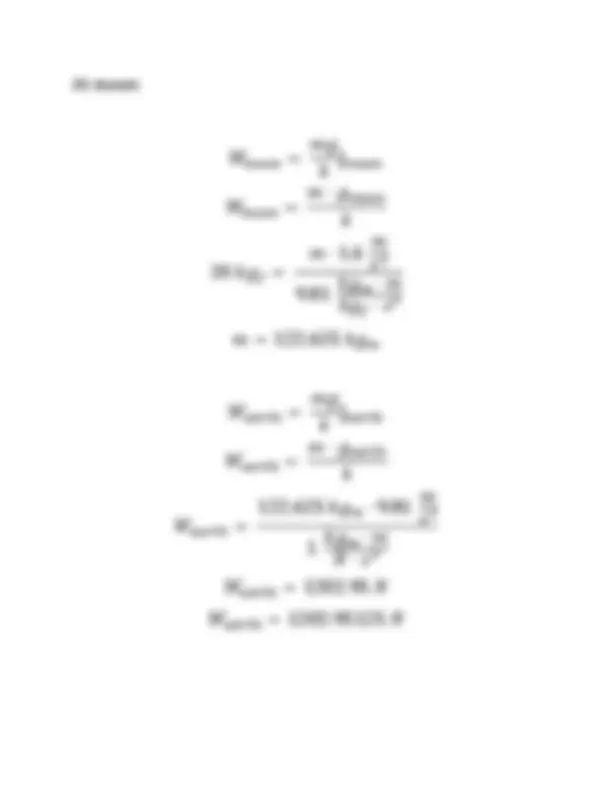
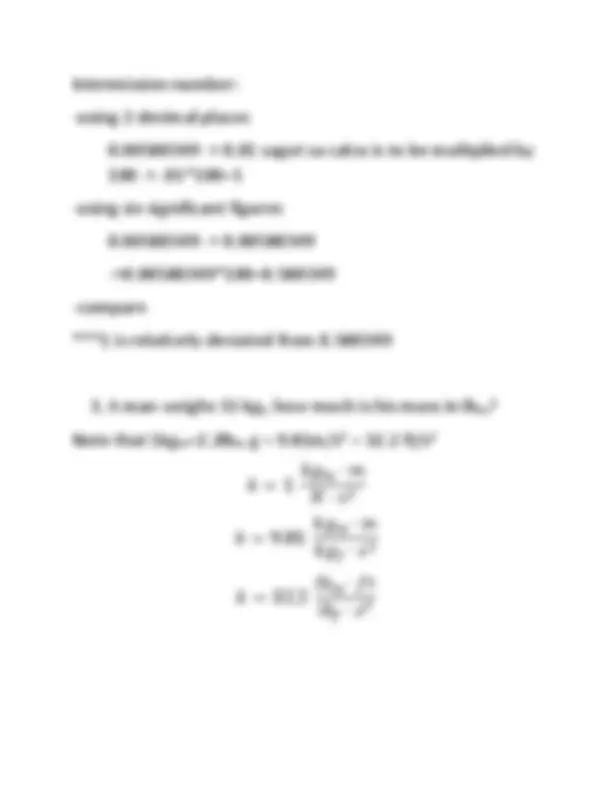
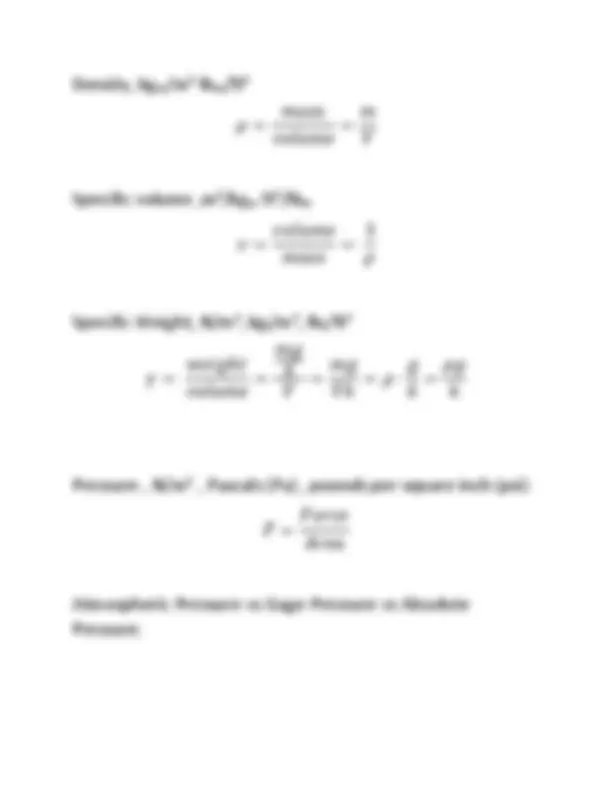
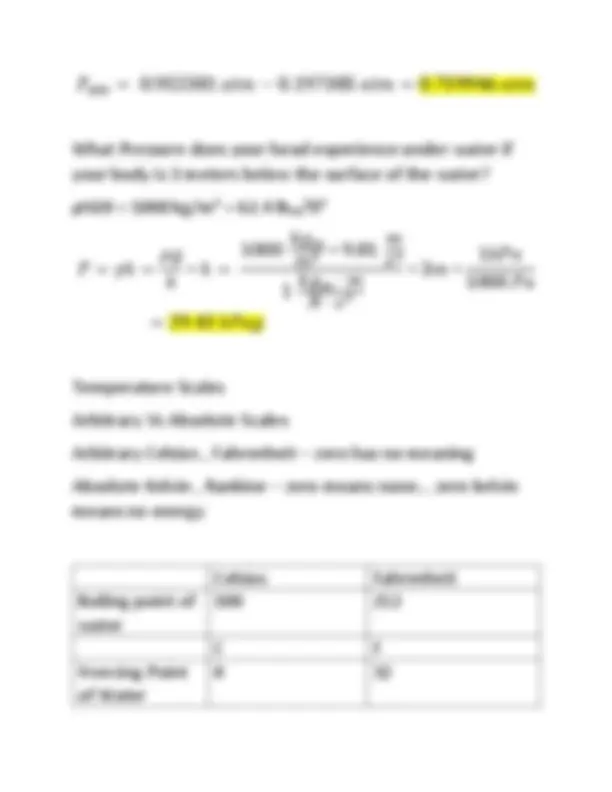
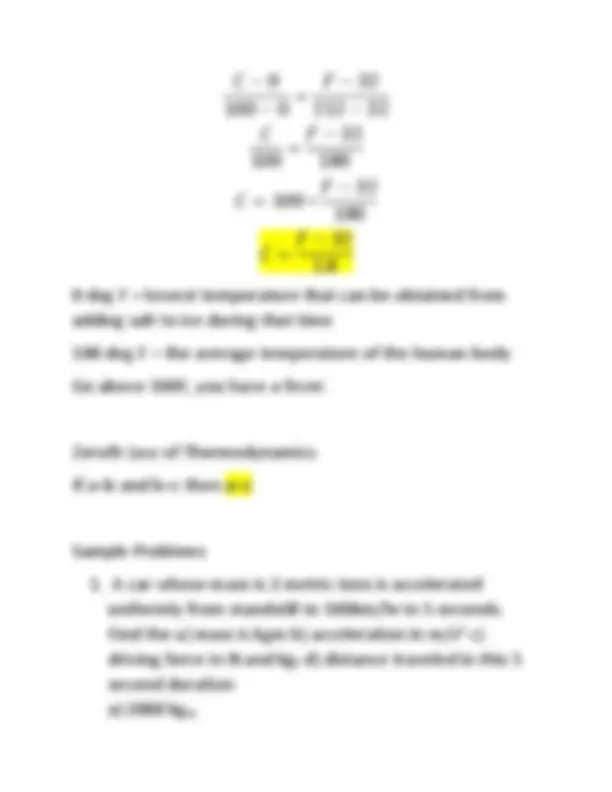
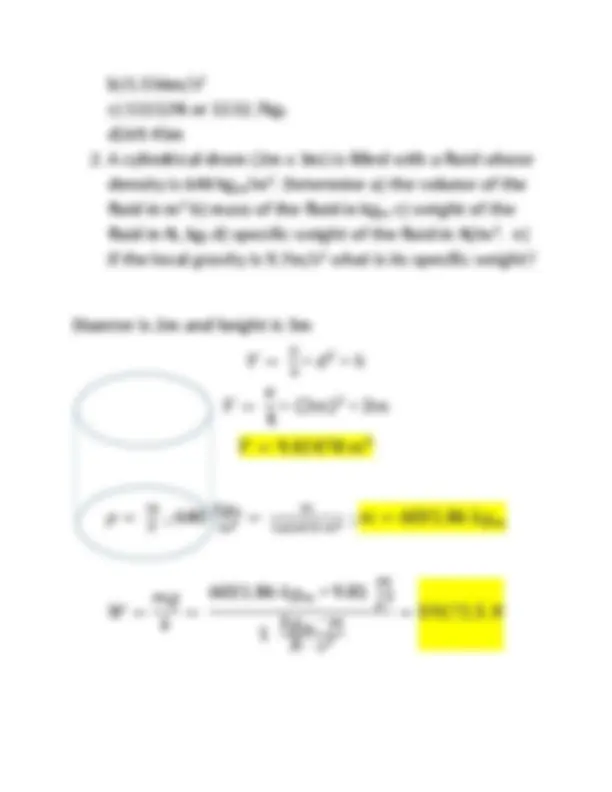


Study with the several resources on Docsity

Earn points by helping other students or get them with a premium plan


Prepare for your exams
Study with the several resources on Docsity

Earn points to download
Earn points by helping other students or get them with a premium plan
Community
Ask the community for help and clear up your study doubts
Discover the best universities in your country according to Docsity users
Free resources
Download our free guides on studying techniques, anxiety management strategies, and thesis advice from Docsity tutors
This is the chapter one of Thermodynamics
Typology: Lecture notes
1 / 11

This page cannot be seen from the preview
Don't miss anything!








On special offer
m = mass ,kgm lbm gm
a = acceleration , g = acceleration due to gravity , m/s^2 ft/s^2 cm/s^2
F = force exerted , W = weight , Newtons (N) ,Dynes (d), kgf , lbf ,gf
k = proportionality constant
Standard Values
g = 9.81 m/s^2 , 32.2 ft/s^2 , 981 cm/s^2
Given W=50N
Req’d mass
𝑊 =
Given Wmoon=20kgf
gmoon=1.6 m/s^2
***mass does not change regardless of location
Intermission number:
-using 2 decimal places
0.00580349 -> 0.01 sagot sa calcu is to be multiplied by 100 -> .01*100=
-using six significant figures
0.00580349 -> 0. ->0.00580349*100=0.
-compare
***1 is relatively deviated from 0.
Note that 1kgm=2.2lbm g = 9.81m/s^2 = 32.2 ft/s^2
𝑘 = 1
Density, kgm/m^3 lbm/ft^3
𝜌 =
Specific volume ,m^3 /kgm ft^3 /lbm
𝑣 =
Specific Weight, N/m^3 , kgf/m^3 , lbf/ft^3
Pressure , N/m^2 , Pascals (Pa) , pounds per square inch (psi)
𝑃 =
Atmospheric Pressure vs Gage Pressure vs Absolute Pressure.
Vacuum Pressure
𝑃𝑎𝑏𝑠 = 𝑃𝑎𝑡𝑚 − 𝑃𝑣𝑎𝑐
Example: a vacuum gage reads 20kPa. The atmospheric pressure is 14 Psi. What is the absolute pressure in atm
𝑃𝑎𝑡𝑚 = 14 𝑃𝑠𝑖 ∗
What Pressure does your head experience under water if your body is 3 meters below the surface of the water?
ρH20 = 1000 kg/m^3 = 62.4 lbm/ft^3
Temperature Scales
Arbitrary Vs Absolute Scales
Arbitrary Celsius , Fahrenheit – zero has no meaning
Absolute Kelvin , Rankine – zero means none… zero kelvin means no energy
Celsius Fahrenheit Boiling point of water
Freezing Point of Water
b) 5.556m/s^2 c) 11112N or 1132.7kgf d) 69.45m
Diamter is 2m and height is 3m
𝑉 = 𝜋 4 ∗ 𝑑^2 ∗ ℎ
𝑉 =